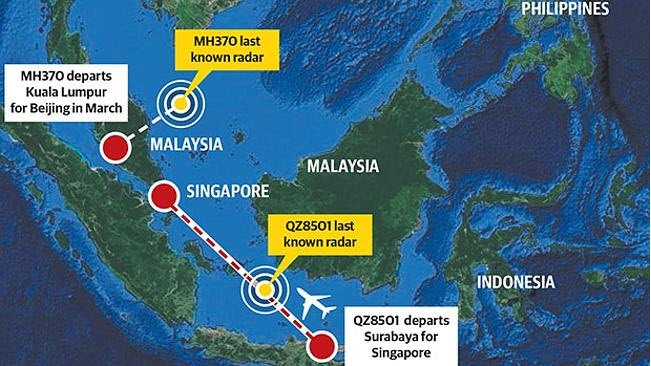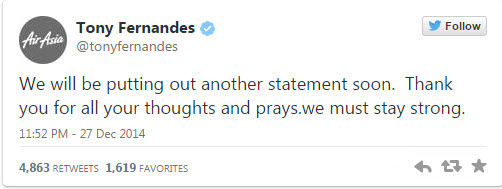Many times in 2014 airlines were in the news for all the wrong reasons. In the airline business customers are quick to throw stones when airlines mess up and reluctant to applaud you for a job well done. I think many passengers forget how difficult it is to run an airline, not to mention make it profitable. Malaysian Airlines was constantly in the news it seemed for the crash of MH370 and the downing of MH17.
While the downing of MH17 was not 100% their fault (some argue they shouldn’t be flying over a war zone) the handling of both situations was suspect. If you take a look at how MH370 was handled you can tell there was no crisis management plan in place. Hishammuddin Hussein the Malaysian Transportation Minister was the figure-head of the crisis and clearly over his. Between misinformation and conflicting report, Hussein wasn’t able to keep a hold of a terrible situation. The priority in the chaos should always be the family of the loved ones on the plane. It didn’t seem like Malaysia Airlines was transparent with the family’s and continued to speculate about development. It didn’t help that most of the families remained in China, while the airline sent grief counselors. Another said fact is that no wreckage or bodies have been found to date, robbing passengers families of closure.
In complete contrast to the MH370 crash, the crash of the AirAsia flight QZ850 an Airbus A320 traveling from Surabaya to Singapore was handled much different. AirAsia CEO Tony Fernandes has been upfront and direct with the media, victims families and followers of the situation. Fernandes has been shown speaking on television, quoted in print media but to me his longest reach has been across social media platforms such as twitter. He early on addressed the masses with a tweet that reaffirmed his position and made sure people knew he was in it for the long haul.
AirAsia a low-cost airline, which has headquarters in Malaysia, continued to keep on lookers aware of the situation by updating CEO Tony Fernandes twitter and even changing the signature red of its logo to grey on its website and social platforms. Fernandes who is somewhat of a maverick and often compared to Richard Branson bought the carrier in 2001 for less than $1. He transformed it from a failing enterprise into a multi-billion dollar aviation success story. His tweets were messages of support and provided details about the company’s steps in handling the tragedy
For me another reason I felt Fernandes has handled the situation well is he has shown sympathy and empathy for the crew and families alike. It didn’t feel like an empty, blanket statement, it actually made me feel like he cared about the victims. He didn’t announce the number of victims as a statistic in a report, he made you feel like it was his family members who were on that flight and he would do all he could to locate the aircraft and the bodies.
Sometimes the crews and employees of the airlines involved in the crash can be left in the dust. With all the negative press about AirAsia, it’s only natural that employees would feel despondent and hurt by the tragedy. It also creates a very difficult work environment, where a lot more is asked of the employees as they face the customers and deal with difficult question. It was nice to see that Fernandes didn’t forget about them and sounded the rallying cry for AirAsia to stand strong at this difficult time.
When tragedy strikes there is no easy way to deal with it. Fernandes showed us that being upfront, showing sympathy and always keeping the victims’ families and employees encouraged is important. It’s also important to have a strategy and stay away from speculation. While no airline ever wants to experience a major crash, you must be prepared. AirAsia was prepared and in turn the CEO became the model by which all other airline CEO’s will be measured by when a crash occurs.




